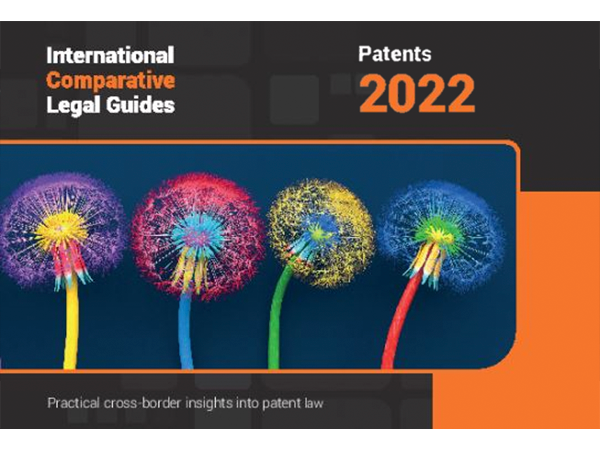
Intellectual Property
Viewpoints
Filter by:
New European Unity Rules in Effect November 1, 2014
November 3, 2014 | Blog | By Christina Sperry, David Wraige
Good news for European patent applicants! On November 1, 2014, amended Rule 164 of the European Patent Convention (EPC), which was previously analyzed by Global IP Matters, finally went into effect.
Read more
“Why, I declare” … Proper Use of Evidentiary Declarations under New (Post-AIA) Rule 37 C.F.R. 1.130
October 30, 2014 | Advisory | By Terri Shieh-Newton
The Leahy-Smith America Invents Act (AIA) was signed into law on September 16, 2011. While the AIA alters U.S. patent practice in several ways, perhaps the most significant change brought about by the law is the switch from a “first to invent” to a “first inventor to file” system, largely for purposes of harmonizing U.S. practice with the majority of other countries.
Read more
Inter Partes Review Initial Filings of Paramount Importance: What Is Clear After Two Years of Inter Partes Review Under the AIA
October 21, 2014 | Advisory | By Michael McNamara
September 16, 2014, marked the two year anniversary since certain provisions of the Leahy-Smith America Invents Act went into effect, including post-grant Inter Partes Review (IPR) proceedings before the Patent Trial and Appeal Board (PTAB or Board) and the United States Patent and Trademark Office (USPTO).
Read more
Electronically Signing USPTO Papers: There’s a Rule for That
October 20, 2014 | Blog | By Christina Sperry
Ten years ago, on September 21, 2004, the USPTO implemented the portion of the 21st Century Strategic Plan permitting the use of electronic or mechanical signatures, called “S-signatures,” on papers filed at the USPTO.
Read more
Tune in to the Global IP Marketplace
October 8, 2014 | Advisory
Mintz Levin is constantly monitoring the global IP marketplace, and we like to keep our clients and friends aware of impactful developments. Below is a summary of last week’s patent-focused Global IP Matters blog posts.
Read more
Think Twice When Writing About the “Invention” in a Patent Application
October 8, 2014 | Blog | By Christina Sperry
Two recent Federal Circuit decisions emphasize that characterizing the “present invention” by using that term in a U.S. patent application specification can limit the claims according to that characterization.
Read more
Did the USPTO Really Improve the 'After Final Consideration Pilot'?
October 3, 2014 | Blog | By Lisa Adams
On October 1, 2014, the United States Patent and Trademark Office (“USPTO”) announced the After Final Consideration Pilot 2.0 (“AFCP 2.0”) – a program intended to provide new features that will enhance communication between the USPTO and the applicant, as compared with the original After Final Consideration Pilot (“AFCP”).
Read more
Federal Circuit Affirms Dismissal Where Co-Owner of Patent Refuses to Join Suit
October 2, 2014 | Blog | By Matthew Hurley
The Federal Circuit recently denied en banc review of its prior decision dismissing a patent infringement suit where a co-owner of the patent-in-suit refused to join the case voluntarily and the court held that it could not force the co-owner to join the suit involuntarily.
Read more
Marking of patented products in the UK
October 1, 2014 | Blog | By David Wraige, Julian Crump
The first parts of the new UK Intellectual Property Act 2014 come into force today. The act will introduce a range of new measures, one of which is that it expands the options available to patent proprietors for marking patented products.
Read more
What’s Happening with Patents at the USPTO? Chief of Staff Byrnes has Answers!
September 19, 2014 | Blog | By Lisa Adams
On September 16, 2014, United States Patent and Trademark Office Chief of Staff Andrew Byrnes presented to the Boston Patent Law Association an update on new quality initiatives and the implementation of White House patent policies.
Read more
ITC Judge Essex Adds His Voice to the SEP-FRAND Debate
July 11, 2014 | Blog | By Sandra Badin, Michael Renaud
Administrative Law Judge Essex of the International Trade Commission (“ITC”) recently issued the public version of his decision in ITC investigation No. 337-TA-868.
Read more
Patent Hold-Up or Patent Hold-Out? Judge Essex Adds His Voice to the SEP-FRAND Debate
July 10, 2014 | Alert | By Michael Renaud, James Wodarski, Sandra Badin
Administrative Law Judge Essex recently issued the public version of his Initial Determination in ITC investigation No. 337-TA-868, ruling that the respondents are precluded from relying on the defense that the patent holder is required to license the patents-in-suit on fair, reasonable and non-discriminatory (“FRAND”) terms when they failed to seek a license before practicing the standard to which they now claim those patents are essential.
Read more
Computer Implementation Not Enough to Render Abstract Ideas Patent Eligible
June 20, 2014 | Alert | By Michael Renaud, Rich Gervase, Sandra Badin
The Supreme Court yesterday issued its long-awaited decision in Alice Corporation v. CLS Bank International addressing the patent eligibility of computer-implemented inventions under 35 USC §101.
Read more
UK High Court confirms jurisdiction to grant cross-border declaration of non-infringement
June 11, 2014 | Blog | By Victoria Clarke
In Actavis Group HF v. Eli Lilly & Co. the UK High Court has granted a declaration of non-infringement in the UK, France, Italy and Spain. A jurisdictional challenge in relation to the French, Italian and Spanish jurisdictions was rejected.
Read more
Supreme Court Delivers Unanimous Decisions in Two Important Patent Cases: What Do This Week’s Limelight and Nautilus Decisions Mean for You?
June 6, 2014 | Alert | By Sandra Badin, Matt Durell
Earlier this week, the United States Supreme Court delivered unanimous opinions in two separate cases addressing questions of patent law, Limelight Networks v. Akamai Technologies (on induced infringement) and Nautilus v. Biosig Instruments (on indefiniteness).
Read more
Could Federal Circuit Decision Weaken FRAND Defense?
May 7, 2014 | Blog
On Monday, May 5, 2014, the Court of Appeals for the Federal Circuit, by transferring the Microsoft v. Motorola case to the Court of Appeals for the Ninth Circuit, issued an order which may significantly impact the ability of participants in standard-setting organizations (“SSOs”) to obtain relief for patent infringement.
Read more
How Will ITC Confirmation That It Has Jurisdiction Over Digital Imports Impact Software and Media Industries?
April 4, 2014 | Blog
The International Trade Commission (ITC) issued its much-awaited decision in Certain Digital Models on April 3, 2014, affirming in a decision with important implications for the software and media industries that digital importation is within the jurisdiction of the Commission.
Read more
Forward-Publishing Patents: A Way to Tell Competitors "Stay Out"?
March 17, 2014 | Blog | By Paul Davis
On March 10, 2014, Sonos announced it would forward-publish its patent applications before they would traditionally be available to the public. This has given rise to quite a bit of discussion in patent legal circles.
Read more
USPTO Guidance for Examiners Takes Expansive View of Myriad and Prometheus Decisions
March 7, 2014 | Blog
On March 4, 2014, the U.S. Patent and Trademark Office (“USPTO”) issued a memorandum to the Patent Examining Corps with guidance for determining the patent eligibility of claims relating to products of nature and laws of nature (“the Guidance”) in view of the U.S. Supreme Court decisions in Assoc. for Molecular Pathology v. Myriad Genetics (“Myriad”) and Mayo Collaborative Services v. Prometheus Laboratories, Inc. (“Prometheus”).
Read more
Federal Circuit Decision Impacts Patent Term Adjustment Calculation
February 7, 2014 | Blog | By Christina Stock
Recently, the Federal Circuit issued a decision in Novartis v. Lee (2013-1160, Fed. Cir., Jan. 15, 2014) which alters Patent Term Adjustment (PTA) calculations for patents where a Request for Continued Examination (RCE) was filed during prosecution.
Read more
Explore Other Viewpoints:
- Data Centers & Digital Infrastructure
- AI: The Washington Report
- Antitrust and Federal Regulation
- Appellate
- Arbitration, Mediation & Alternate Dispute Resolution
- Artificial Intelligence
- Awards
- Bankruptcy & Restructuring
- California Land Use
- Cannabis
- Class Action
- Complex Commercial Litigation
- Construction
- Consumer Product Safety
- Corporate Governance (ESG)
- Cross-Border Asset Recovery
- DEI Legal Developments
- Debt Financing
- Direct Investing (M&A)
- Diversity
- EB-5 Financing
- Education & Nonprofits
- Employment
- EnforceMintz
- Environmental (ESG)
- Environmental Enforcement Defense
- Environmental Law
- Environmental, Social, and Corporate Governance (ESG)
- FDA Regulatory
- False Claims Act
- Federal Circuit Appeals
- Financial Institution Litigation
- Government Law
- Growth Equity
- Health Care
- Health Care Compliance, Fraud and Abuse, & Regulatory Counseling
- Health Care Enforcement & Investigations
- Health Care Transactions
- Health Information Privacy & Security
- IP Due Diligence
- IPRs & Other Post Grant Proceedings
- Immigration
- Impacts of a New US Administration
- Insolvency & Creditor Rights Litigation
- Institutional Investor Class Action Recovery
- Insurance & Financial Services
- Insurance Consulting & Risk Management
- Insurance and Reinsurance Problem-Solving & Dispute Resolution
- Intellectual Property
- Investment Funds
- Israel
- Licensing & Technology Transactions
- Life Sciences
- Litigation & Investigations
- M&A Litigation
- ML Strategies
- Managed Care
- Medicare, Medicaid and Commercial Coverage & Reimbursement
- Mergers & Acquisitions
- Patent Litigation
- Patent Prosecution & Strategic Counseling
- Pharmacy Benefits and PBM Contracting
- Portfolio Companies
- Privacy & Cybersecurity
- Private Client
- Private Equity
- Pro Bono
- Probate & Fiduciary Litigation
- Products Liability & Complex Tort
- Projects & Infrastructure
- Public Finance
- Real Estate Litigation
- Real Estate Transactions
- Real Estate, Construction & Infrastructure
- Retail & Consumer Products
- Securities & Capital Markets
- Securities Litigation
- Social (ESG)
- Special Purpose Acquisition Company (SPACs)
- Sports & Entertainment
- State Attorneys General
- Strategic IP Monetization & Licensing
- Sustainable Energy & Infrastructure
- Tax
- Technology
- Technology, Communications & Media
- Technology, Communications & Media Litigation
- Trade Secrets
- Trademark & Copyright
- Trademark Litigation
- Unified Patent Court (UPC)
- Value-Based Care
- Venture Capital & Emerging Companies
- White Collar Defense & Government Investigations
- Women's Health and Technology



